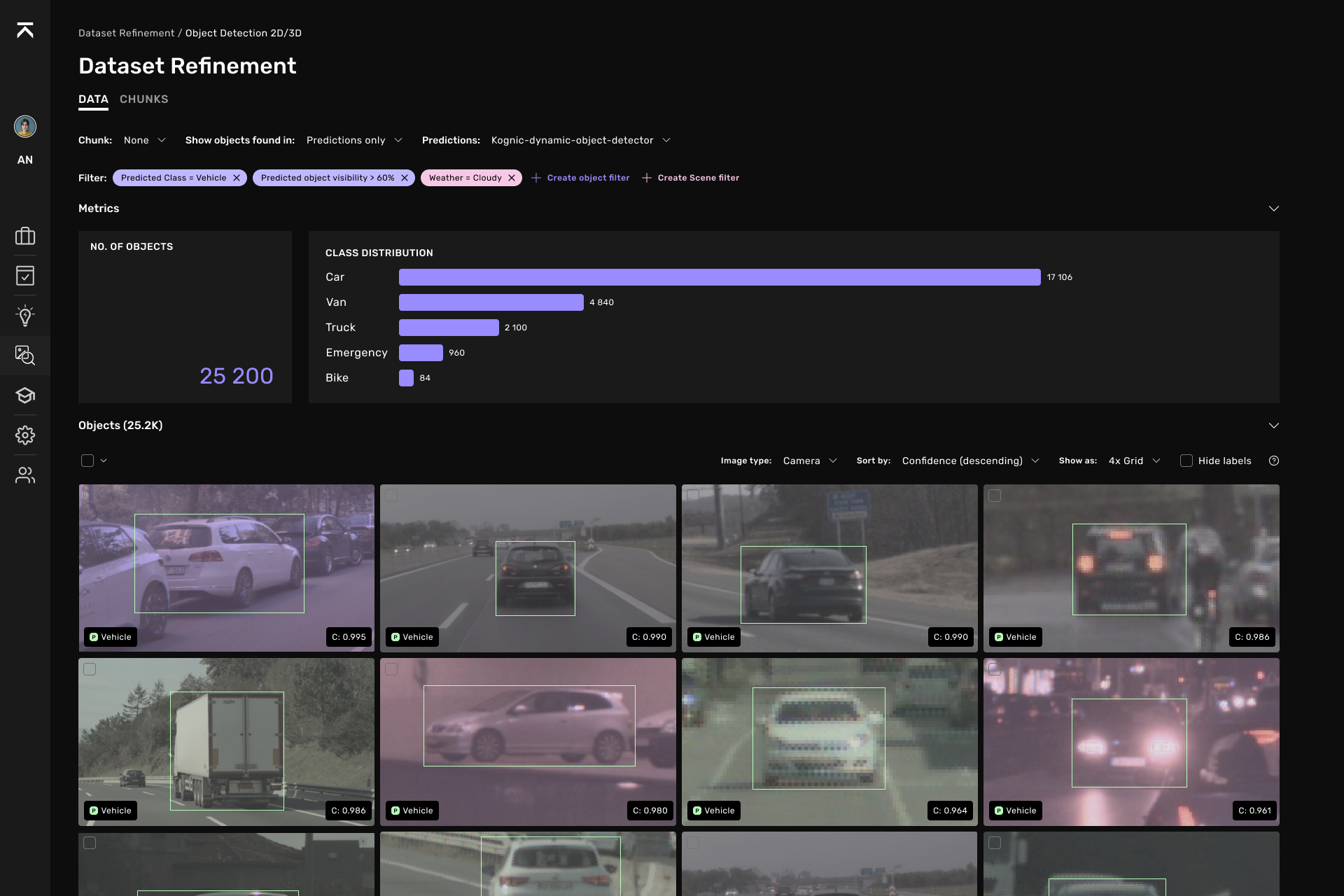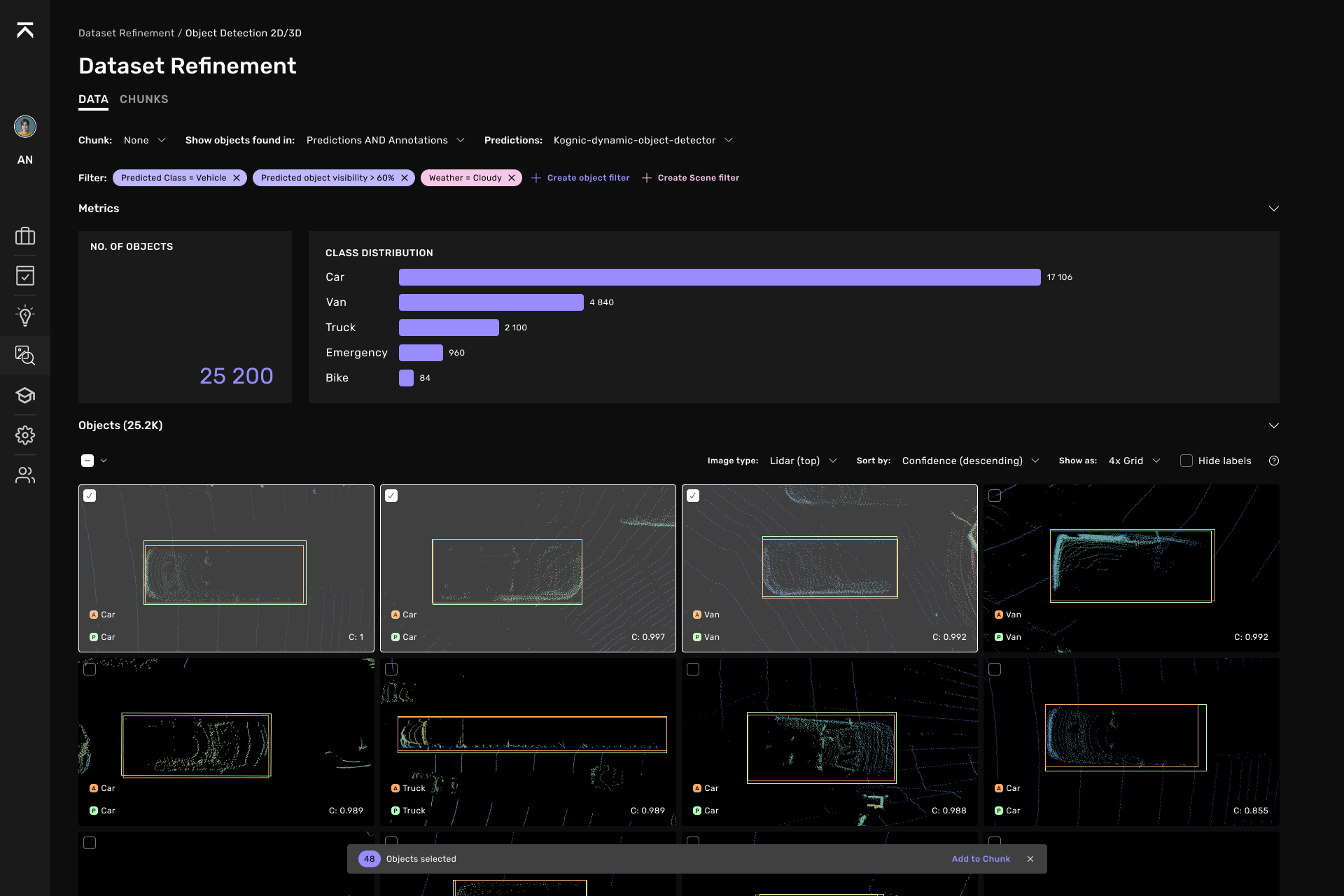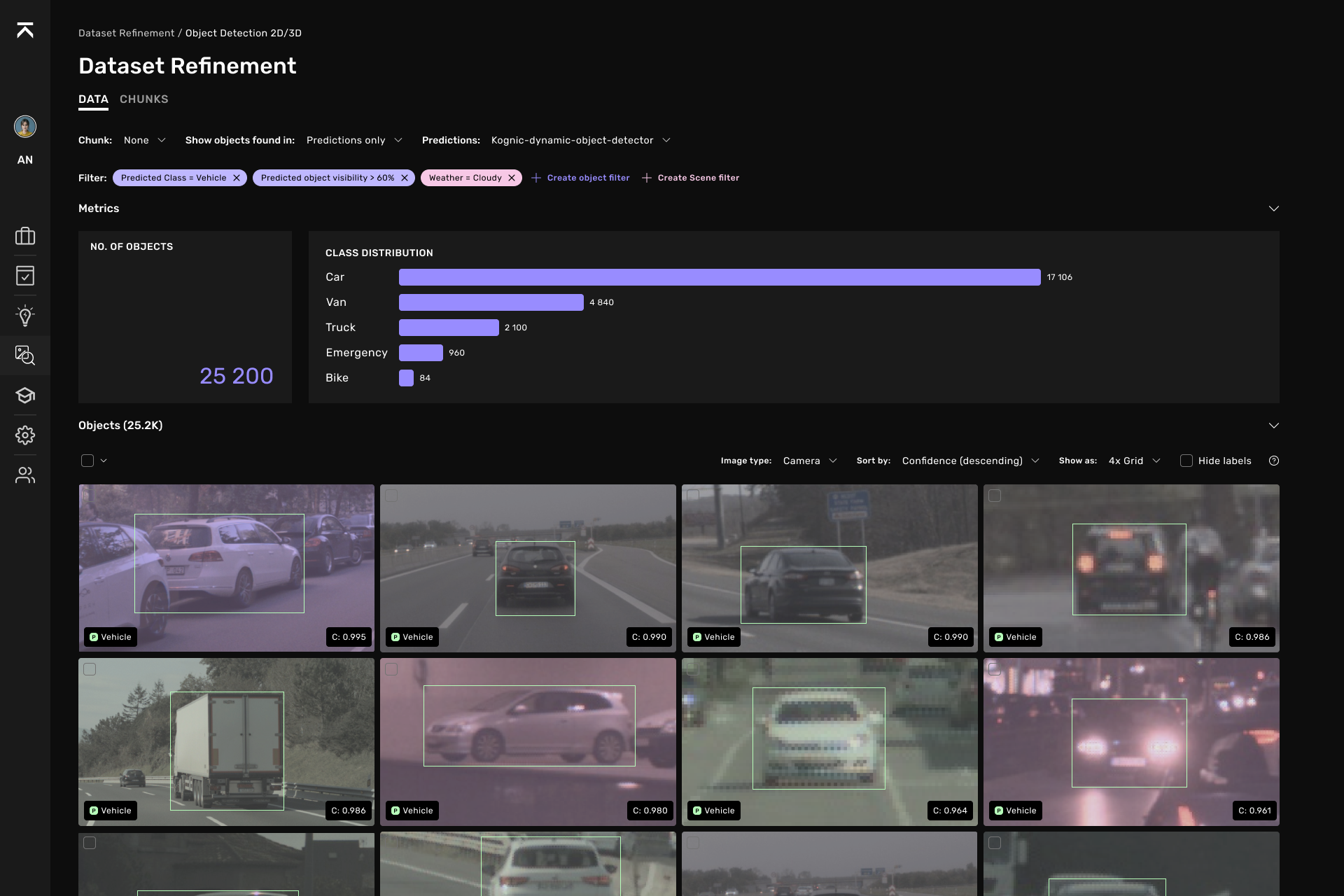Maximize Your Annotation Budget with Dataset Curation
Building autonomous systems requires more than just collecting data—it demands continuous refinement. As your models evolve, so must your datasets. At Kognic, we believe that updating data should be a key component in modern data pipelines, enabling you to get the most annotated autonomy data for your budget.
Whether you're correcting annotation mistakes, adapting to new requirements, or enriching datasets with additional labels, manual review of entire datasets simply isn't scalable. That's why we've built tools to help you efficiently refine your data and integrate cost-efficient human feedback exactly where it matters most.
Introducing our Dataset Curation tool—designed to maximize your ROI through smart, targeted updates. ✨

How it works
Refining your data is effortless with Kognic's platform.
Browse your annotated data in a powerful gallery with advanced filtering capabilities. Search for specific objects, visualize them across sensors, and upload your model predictions to unlock the real power. By sorting examples based on model confidence, you can quickly identify annotation errors where your model disagrees with the ground truth. If your model performs well, high-confidence discrepancies often reveal actual mistakes—enabling you to fix them immediately or route them for correction.
For example, you might want to find potentially missed objects. Simply filter to show objects detected by your model but absent in your annotations, sorted by prediction confidence. Select the ones that matter, send them for annotation, and retrain your model with improved data. This iterative workflow ensures you spend just the right amount of time and resources on the data that drives model performance—a core principle of cost-efficient human feedback.
Simple fixes can be made instantly, while complex corrections are sent back to Kognic's expert annotation team with a single click. Create "chunks" to organize your data, add descriptions like "missed cars," and send them for correction—then we handle the rest with our proven combination of Platform, Process, and People.

What does Dataset Curation include?
✅ Flexible object-centric gallery for rapid data inspection
✅ In-context viewing with direct links to annotation tasks
✅ Sorting by model confidence to surface high-value corrections
✅ Advanced filtering to find relevant data using predicted and annotated object filters
✅ Chunk creation to group data for review or investigation
✅ One-click correction workflow through the UI
✅ Support for 3D cuboids in LiDAR and 2D images
Proven results with leading autonomy teams
Our customers are already using Dataset Curation to improve annotation quality, boost productivity, and accelerate model development.
Using the gallery's sorting capabilities and chunk functionality, customers identify high-priority corrections and send them to Kognic with a single click. Our Data Delivery Team allocates expert annotators, provides clear guidelines, and delivers corrected tasks—enabling teams to iterate faster and train better models.
Get more annotated data for your budget
Dataset Curation makes it easy to fix mistakes and update previously annotated data—helping you integrate scalable, cost-efficient human feedback into your data pipeline.
Want to see how Dataset Curation can help your team train autonomous systems faster? Schedule a demo from the top menu of our website. We'd love to show you what's possible!
Share this
Written by



.png?width=2000&name=kognic%20logo-black%20(1).png)
